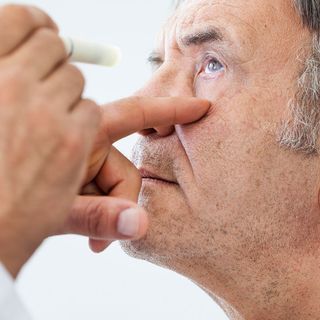Pterygium Treatment
Sunlight is good for you! However, prolonged exposure to UV light, coupled with wind and dust can be dangerous for your eyes, often resulting in conditions called pinguecula and pterygium--commonly called, "Surfer's Eye." Since these sunny, dry, dusty weather conditions are very common in places like Arizona, Tucson Eye Physicians
specializes in pterygium treatment.
Understanding Surfer's Eye
There are two versions or stages to what is generally referred to as “Surfer’s Eye.” The first stage, pinguecula, typically presents as a raised, yellowish growth on the white part of the eye. It usually appears on the side of the eye closest to the nose but can occur on either side of the eye. Pinguecula is a deposit of protein, fat, or calcium.
Pterygium is the second version of Surfer’s Eye, and it is usually when people notice a problem. Pterygium is a growth of tissue that will often grow large enough to interfere with an individual’s eyesight. At this stage, it has grown large enough to cover part of the cornea and requires an ophthalmologist’s treatment.
Pterygiums may often begin as pingueculas, so it’s important to seek treatment at the first sign of these issues.
Understanding Pterygium
There are two versions or stages to what is generally referred to as “Surfer’s Eye.” The first stage, pinguecula, typically presents as a raised, yellowish growth on the white part of the eye. It usually appears on the side of the eye closest to the nose but can occur on either side of the eye. Pinguecula is a deposit of protein, fat, or calcium.
Pterygium is the second version of Surfer’s Eye, and it is usually when people notice a problem. Pterygium is a growth of tissue that will often grow large enough to interfere with an individual’s eyesight. At this stage, it has grown large enough to cover part of the cornea and requires an ophthalmologist’s treatment.
Pterygiums may often begin as pingueculas, so it’s important to seek treatment at the first sign of these issues.
Preventing Pterygium and Pinguecula
Preventing Pterygium and Pinguecula
The following suggestions are good eye care advice for anyone, but Tucson Eye Physicians wants to remind you that, if you’ve had a pterygium or pinguecula once before, you are especially susceptible to their recurrence.
- If you are going to be outdoors or exposed to sunlight for any length of time, always wear sunglasses to protect your eyes from potentially dangerous UV light.
- If you are going to be around dust or flying particles, wear goggles or glasses to protect your eyes.
- If your eyes dry out due to the harsh, arid Arizona weather, don’t be afraid to use artificial tears or eye drops to help lubricate your eyes.
If you have additional questions about pterygium, call us at
520-742-1900 right away.
If you have additional questions about pterygium, call us at
520-742-1900 right away.
QUICK LINKS
CONTACT INFO
Phone:
520-742-1900
Fax:
520-742-1170
Address:
1745 E Skyline Drive #175
Tucson, AZ 85718
13395 N Marana Main Street
Marana, AZ 85653
1815 N Mastick Way
Nogales, AZ 85621
5053 South 12th Avenue
Tucson, AZ 85706
Content, including images, displayed on this website is protected by copyright laws. Downloading, republication, retransmission or reproduction of content on this website is strictly prohibited. Terms of Use
| Privacy Policy






